|
|
|
Yale University Press
|
William Holman Hunt was one of the three major artistic talents of the Pre-Raphaelite brotherhood. Hunt’s work was always characterized by great seriousness of purpose, and his paintings include many of the most beautiful and powerful images of that midcentury explosion of creativity. This catalogue raisonée gives him the attention he deserves. The book includes an introduction that assesses Hunt’s life and artistic practice and discusses his aims, philosophy, and religious beliefs, which shed light on his works. While many of his paintings, with their extraordinary effects of light and color, are immediately accessible, his mature works incorporate symbolism that cannot be fully understood without a detailed knowledge of his intentions, and the catalogue entries thoroughly explore this. The volume presents Hunt’s oils and works on paper in two separate sections, and appendixes provide additional information on his illustrated letters, etchings, published illustrations, sculpture, and furniture. |
|
Presents an overall view of the history and changing character of Early Christian and Byzantine architecture, from Rome and Milan to North Africa, Constantinople, Greece and the Balkans and from Egypt and Jerusalem to the villages and monasteries of Syria, Asia Minor, Armenia and Mesopotamia. |
|
Thomas Eakins (1844-1916) is one of the most fascinating and important personalities in the history of American art. His memorable and much-loved scenes of rowing, sailing, and boxing as well as his deeply moving portraits are renowned for their vibrant realism and dramatic intensity. This beautiful and insightful book, published in conjunction with a major exhibition on the life and career of Eakins — the first in twenty years — presents a fresh perspective on the artist and his remarkable accomplishments. Lavishly illustrated with more than 250 of Eakins's most significant paintings, watercolours, drawings, and sculpture, the book features essays by prominent scholars who place his art in the context of the history and culture of late nineteenth-century Philadelphia, where he lived. The contributors also discuss how Eakins applied his French academic training to subjects that were distinctly American and part of his own immediate and complex experience. Eakins's own photographs, which he used as part of his unique creative process, are also examined for the first time in the full context of his life's work. The exhibition Thomas Eakins will be on view at the Philadelphia Museum of Art from 4th October, 2001 to 6th January, 2002; the Musee d'Orsay, Paris, from 3rd February to 12th May, 2002; and The Metropolitan Museum of Art, New York, from 10th June to 15th September, 2002. |
|
«Distinguished historian of the Soviet period Robert V. Daniels offers a penetrating survey of the evolution of the Soviet system and its ideology. In a tightly woven series of analyses written during his career-long inquiry into the Soviet Union, Daniels explores the Soviet experience from Karl Marx to Boris Yeltsin and shows how key ideological notions were altered as Soviet history unfolded. The book exposes a long history of American misunderstanding of the Soviet Union, leading up to the «grand surprise» of its collapse in 1991. Daniels's perspective is always original, and his assessments, some worked out years ago, are strikingly prescient in the light of post-1991 archival revelations. Soviet Communism evolved and decayed over the decades, Daniels argues, through a prolonged revolutionary process, combined with the challenges of modernization and the personal struggles between ideologues and power-grabbers.» |
|
Known as the century of anatomy, the 16th century in Italy saw an explosion of studies and treatises on the discipline. Medical science advanced at an unprecedented rate, and physicians published on anatomy as never before. Simultaneously, many of the period's most prominent artists — including Leonardo and Michelangelo in Florence, Raphael in Rome, and Rubens working in Italy — turned to the study of anatomy to inform their own drawings and sculptures, some by working directly with anatomists and helping to illustrate their discoveries. The result was a rich corpus of art objects detailing the workings of the human body with an accuracy never before attained. Art and Anatomy in Renaissance Italy examines this crossroads between art and science, showing how the attempt to depict bone structure, musculature, and our inner workings — both in drawings and in three dimensions — constituted an important step forward in how the body was represented in art. While already remarkable at the time of their original publication, the anatomical drawings by 16th-century masters have even foreshadowed developments in anatomic studies in modern times. |
|
Known primarily as a great painter, Bartolome Esteban Murillo (1617-1682) was also one of the best draftsmen of the 17th century. Although his devotional paintings seem to have been created effortlessly, they are the result of careful thought and study, a process that comes alive in the preparatory drawings. Murillo used a variety of techniques, favoring pen and ink and brown wash and red-and-black chalk. Like painters schooled in Italian Renaissance practice, the Spaniard developed his paintings in stages, starting with sketches of the full composition and then focusing on details that posed specific problems. Occasionally, Murillo used drawings as a medium for original compositions; these are highly finished pieces, usually enhanced by the use of wash and unmistakably stamped with the artist's personality. This sumptuous book is a thoroughly revised edition of the 1976 publication Murillo & His Drawings. Twenty sheets have been added to the catalogue of authentic works, the bibliography has been brought up to date, and the entries have been revised. |
|
Under the rule of Henry VII (r. 1485-1509) England became a powerful nation. The Tudor court sought to express its worldliness and political clout through major artistic commissions, employing Florentine sculptors and painters to create lavish new interiors, suitable for entertaining foreign dignitaries, for its royal palaces. These were exemplified by Henry VIII's palace of Nonsuch, so named because no other palace could match its magnificence. Italian sculpture, painting, and tapestries of the day reflected an interest in portraiture and dynastic monuments, epitomized in England by the royal tomb projects created by Baccio Bandinelli, Benedetto da Rovezzano, and Pietro Torrigiani. Generously illustrated throughout, The Anglo-Florentine Renaissance traces the artistic links between Medicean Florence and Tudor England through essays by an international team of scholars and explores how the language of Florentine art effectively expressed England's political aspirations and rose to prominence as a new international courtly style. |
|
Titian is acknowledged as the greatest of the sixteenth-century Venetian painters, best known for his portraits, mythological pictures and religious subjects. Yet his first great achievement as a painter, schooled in the workshop of Giovanni Bellini, was to refashion the portrayal of nature in his own distinctive style by studying the work of Albrecht Durer, whose naturalistic paintings of plants, animals and landscape — for which northern European artists were renowned — had caused a sensation in Venice in the first decade of the sixteenth century. In this short, beautifully illustrated book, Antonio Mazzotta presents this experience, together with Titian's native landscape of PievediCadore, as crucial influences in the artist's early representation of nature. The recently restored Flight into Egypt (now in the Hermitage Museum, St Petersburg) — probably painted when Titian was still a teenager — is vivid proof of his interest in the depiction of animals, plants and figures in the landscape. The author's carefully chosen comparisons of paintings, prints, drawings and details of works by the young Titian, Durer and their contemporaries (including Sebastiano del Piombo and Giorgione) suggest that Titian was as innovative and as influential in his unique view of nature as he was in portraiture. |
|
Tiepolo is a brilliant example of the specifically pictorial intelligence. This book is both a study of his art and an argument for fuller recognition of the peculiarities of the painter's representational medium. Alpers and Baxandall locate distinctive modes of Tiepolo's representation of the world and human action; follow his process of invention from first pen drawings, through small oil sketches, to great frescoes; and analyse his best and biggest painting, the Four Continents in the Stairway Hall of the Prince-Bishop's Residence at Wurzburg, illustrated with photographs specially taken for the book. The topics taken up include: painting's resistance to enacted narrative drama, its engagement with indeterminacies and repetitions, the senses in which a painter may 'perform' both past art and himself, the constructive roles of gestural drawing, exploitation of shifts of scale between design and finished work, dialogue between the changing natural site lighting and in-picture lighting, contributions made by the beholder's own mobility, the expressive scope of tensions between two and three dimensions, the deep rationale of rococo formal structure, and the sources of the moral force of pictures without an explicit moral. The book — both art criticism and a practical polemic — ends with an annotated gazetteer for travellers, listing those Tiepolo paintings that can still be seen in the places and conditions for which he painted them. |
|
Sir Thomas Lawrence (1769-1830) was the pre-eminent portraitist of the Regency period, depicting monarchs, political leaders, aristocratic families, society beauties and actresses with bravura flair. This important book explores Lawrence's political friendships and allegiances along with his exceptional role as witness to significant historical events and contrasts these with his remarkable ability to depict the charm and innocence of childhood. Elected President of the Royal Academy in 1820, Lawrence was instrumental in establishing the status of the artist in nineteenth-century Britain. |
|
Roman sculpture was an integral part of Roman life, and the Romans placed statues and reliefs in their flora, basilicas, temples and public baths as well as in their houses, villas, gardens and tombs. In this illustrated book, Diana Kleiner discuses all the major public and private monuments in Rome, as well as many less well-known monuments in the capital and elsewhere in the empire. She examines art commissioned by the imperial elite as well as by private patrons, including freedmen and slaves and also highlights monuments honouring women and children. Kleiner demonstrates that the sociala, ethnic and geographical diversity of Roman patronage led to an art that was eclectic and characterised by varying styles, often tied to the social status of the patron, but she also examines the interrelations between works produced for different kinds of patrons. Kleiner begins with a long thematic introduction that describes Rome and its empire, characterises patrons from the capital and the provinces, discusses the position of the artist in Roman society and the materials he used, and presents a history of the study of Roman art. The remaining chapters constitute a chronological examination of Roman sculpture from the foundation of Rome in 753 BC to the transfer of the capital to Constantinople in AD 330. In each period the monuments are divided by type, for example portraiture, state relief sculpture, the art of freedmen and provincial art. Throughout, Kleiner treats Roman Sculpture in its cultural, political and social contexts and, wherever possible, as an element of the architectural commplex in which it was set. |
|
Discussing the development of Greek architecture in the Aegean and other Greek lands from its earliest beginnings around 3000 BC to the first century BC. The temples of the Hellenic age are discussed, as are domestic Greek architecture, town planning, theatres and fortifications. |
|
In Britain today the output of excellent ceramics seems more eclectic than elsewhere. This stylish and wide-ranging survey comprises examples of clay art by one hundred major artists, covering the period from the late 1980s through 2009. Drawn from the Diane and Marc Grainer Collection, it includes works by Allison Britton, Edmund de Waal, Kate Malone, Grayson Perry, Julian Stair, Steve Dixon, and Nick Arroyave-Portela, among others. The selection balances functional objects and sculpture; hand-built, thrown, and moulded techniques; varieties of scale and colour; and cerebral and emotional content. All the ceramics here are rooted in the materiality of clay. The properties of the raw material, from its soft, malleable texture to the alchemy of slips and glazes, are at the core of the artists' passion. And, as the text reveals, the younger generation is moving into new directions of art practice. It is published in conjunction with the inaugural exhibition at the Mint Museum Uptown, Charlotte, NC. |
|
French architecture of the 18th century — which exhibited great technical ability and refined taste — influenced architectural style throughout Europe. This book is a survey of the French architecture of the period. It begins with the origins of the style moderne under the last years of Louis XIV, discusses the end of Rococo and the return to antiquity, and concludes with the Revolutionary architecture and the house of Madame Recamier. Kalnein describes the development of palace and hotel architecture by the two great architects de Cotte and Boffrand, discussing such large urban projects as the reconstruction of Rennes and the Places Royales. He traces the return to antiquity (which began when the scholars of the Academic d'Architecture were sent to Rome), the revolutionary architecture with its grand, but never executed, projects, and the shift from neoclassicism to early romanticism. Kalnein also examines the decorative arts of the period, which became even more important than architecture in the Rococo period. Focusing on such architects as Boffrand, Gabriel, and Redoux, he shows how a study of their building decoration illuminates the evolution of style moderne, the battle between Rococo and Neoclassicism, and the dissemination of French styles throughout Europe. |
|
Lindsey Hughes, author of the classic account of Russia during the reign of Peter the Great, here provides the definitive shorter biography of this dramatic, appealing and unconventional character. The book tells the story of Peter the Great (1672-1725) from birth to death in twelve chapters, including two final chapters on his legacy and posthumous reputation with the aim of providing a vivid sense of the dynamics of his life and reign. The focus is firmly on Peter himself: his actions, deliberations, decisions, relationships, tastes and possessions, and includes the more bizarre aspects of his character, such as his interest in dwarfs, the use of disguises, clowning and vandalism. The main sources are his letters and papers, both published and unpublished, as well as other contemporary accounts and letters. The narrative comprises both the public and private life, the life Peter lived as well as his significant fantasy world. Hughes offers fascinating new material on the 'alternative' or 'parallel' history of Peter's many disguises and pseudonyms, his deference to a number of mock superiors (Prince-Caesar, Prince-Pope, the mock Chief Surveyor), and his relationships with individuals such as his second wife Catherine and his favourite Alexander Menshikov. In each chapter she explores Peter's image in painting and sculpture, bringing the story to the present day with a discussion of controversial monuments in Moscow and St Petersburg. |
|
Isabella Ginor and Gideon Remez’s groundbreaking history of the Six-Day War in 1967 radically changes our understanding of that conflict, casting it as a crucial arena of Cold War intrigue that has shaped the Middle East to this day. The authors, award-winning Israeli journalists and historians, have investigated newly available documents and testimonies from the former Soviet Union, cross-checked them against Israeli and Western sources, and arrived at fresh and startling conclusions. Contrary to previous interpretations, Ginor and Remez’s book shows that the Six-Day War was the result of a joint Soviet-Arab gambit to provoke Israel into a preemptive attack. The authors reveal how the Soviets received a secret Israeli message indicating that Israel, despite its official ambiguity, was about to acquire nuclear weapons. Determined to destroy Israel’s nuclear program before it could produce an atomic bomb, the Soviets then began preparing for war--well before Moscow accused Israel of offensive intent, the overt trigger of the crisis. Ginor and Remez’s startling account details how the Soviet-Arab onslaught was to be unleashed once Israel had been drawn into action and was branded as the aggressor. The Soviets had submarine-based nuclear missiles poised for use against Israel in case it already possessed and tried to use an atomic device, and the USSR prepared and actually began a marine landing on Israel’s shores backed by strategic bombers and fighter squadrons. They sent their most advanced, still-secret aircraft, the MiG-25 Foxbat, on provocative sorties over Israel’s Dimona nuclear complex to prepare the planned attack on it, and to scare Israel into making the first strike. It was only the unpredicted devastation of Israel’s response that narrowly thwarted the Soviet design. |
|
From about 1425, artists in the region which is now Belgium and The Netherlands created paintings which were startling in their realism and innovative approach. Published to accompany an exhibition at The Metropolitan Museum of Art, New York, this book celebrates one of the great epochs of western art, from the work of the inventor of oil painting, Jan van Eyck, to that of the highly original genius, Peter Bruegel. More than 100 colour reproductions, with individual commentaries, present the accomplishments of the major figures of the period, including Robert Campin, Rogier van der Weyden, Gerard David and Hans Memling. Essays by specialists in the field discuss various aspects of the subject, and biographies are provided for all the artists represented, together with comparative illustrations of prints and paintings from collections other than that of The Metropolitan. |
|
«Drawing on a wealth of unpublished sketchbooks, journals and writings, this essential guide to John Brett (1831-1902) investigates the painter who was seen as the leader of the Pre-Raphaelite landscape school. As well as the familiar early works, including «The Val d'Aosta» and «The Stonebreaker», it provides rich information on his later, less-known coastal and marine paintings. Brett's turbulent friendship with John Ruskin is discussed, as are his relations with his beloved sister Rosa, and his partner Mary, with whom he had seven children. His fervent interest in astronomy, his love of the sea, and his lifelong pursuit of wealth and recognition are all examined in this reassessment, which concludes with a catalogue raisonne of his works, prepared by his descendent Charles Brett. It is published to coincide with an exhibition of John Brett's work at Birmingham, Barber Institute, 30 April — 4 July; London, Fine Art Society, 20 July — 7 August; and, Cambridge, Fitzwilliam Museum, 14 September — 28 November.» |
|
Working in his villa in the south of France, Pierre Bonnard (1867–1947) suffused his late canvases with radiant Mediterranean light and dazzling color. Although his subjects were close at hand—usually everyday domestic scenes—Bonnard rarely painted from life. Instead, he made pencil sketches in diaries and relied on these, along with his memory, as he executed the works in his studio. These interiors thus often conflate details from the artist’s daily life with fleeting, mysterious evocations of his past. The spectral figures who appear at the margins of the canvases, overshadowed by brilliantly colored baskets of fruit or other props, create an atmosphere of profound ambiguity and puzzling abstraction: the mundane rendered in a wholly new pictorial language. The 75 paintings, drawings, and watercolors in this volume, some rarely seen treasures from private collections, all made between 1923 and 1947, are central to the ongoing reappraisal of Bonnard as a leading figure of French modernism. |
|
Inverting rules with obvious relish, Florentine artist Piero di Cosimo (1462–1522) is known today—as he was in his own time—for his highly personal visual language, one capable of generating images of the most mesmerizing oddity. In this book, Dennis Geronimus overcomes the scarcity of information about the artist’s life and works—only one of the nearly sixty known works by Piero is actually signed and dated—and pieces together from extensive archival research the most complete and accurate account of Piero’s life and career ever written. Unfettered imagination was the sign under which Piero exercised his pictorial invention, and yet the complicated artist was also a product of his culture. The book fills gaps in the artist’s biography and provides intensive analysis of Piero’s protean imagery, discusses his various patrons and commissions, and lists his extant, lost, and uncertainly attributed works. |
|